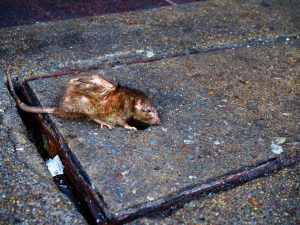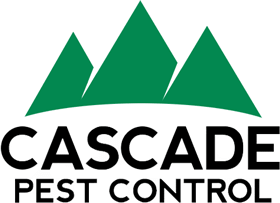Author: Kurt Treftz, Cascade Pest Control
This is a follow-up on our last video blog post Why So Many Rats in the Greater Seattle / Puget Sound Region? – which explores reasons why the Seattle region is prone to so many rats and rodents.
Seattle: One of the Rattiest Cities
When the Department of Housing and Urban Development researched this issue, Seattle was found to have more rats than any other city in the U.S. That means we even have more rats per capita than New York city! Our abundant rat predicament doesn’t stop at Seattle’s city boundary either. It extends well into most all the greater Seattle area—including communities such as Auburn, Bellevue, Mercer Island, Redmond, Everett and beyond.
But why? Why us? And, why here? Cascade’s 40 years of experience provides a unique perspective on what has happened in our region around rodents, and rats, in particular.
Seattle’s History with Rats
 Seattle has long had a ‘healthy’ population of rats but is used to be far more confined. The fishing and early shipping port of Seattle had rats brought in from afar—originally the rats came from Europe. And long before that these rat species—Norway rat and Roof rat—came from Mongolia and northern China. Shipping brought rats to the ports of Tacoma, Everett, Anacortes and Bellingham. By the time Cascade Pest Control began, in 1979, rats were well established in the waterfront towns and cities throughout the greater Seattle, Puget Sound region and had spread throughout the older neighborhoods of the larger cities of the various counties. Rats could be found on Mercer Island, in pockets of Bellevue, Kirkland, and some other cities.
Seattle has long had a ‘healthy’ population of rats but is used to be far more confined. The fishing and early shipping port of Seattle had rats brought in from afar—originally the rats came from Europe. And long before that these rat species—Norway rat and Roof rat—came from Mongolia and northern China. Shipping brought rats to the ports of Tacoma, Everett, Anacortes and Bellingham. By the time Cascade Pest Control began, in 1979, rats were well established in the waterfront towns and cities throughout the greater Seattle, Puget Sound region and had spread throughout the older neighborhoods of the larger cities of the various counties. Rats could be found on Mercer Island, in pockets of Bellevue, Kirkland, and some other cities.
Otherwise, most area covered by local counties was still largely rural with just the early sprawling of suburbia and new urban threads. In these areas, more away from dense human settlement, we had other rodents such as the Douglas squirrel, shrews and a multitude of deer mice. Only rarely, and at some larger farms overflowing with animal feed, did we otherwise find rats. Deer mice, and other small animals and rodents—all native, were widespread and plentiful.
In those days when we at Cascade Pest Control went into homes in rural and all the outlying suburbs, we found houses were infested with mice. And if the family had a barn or stable, the mice scurried everywhere when you walked in. Little did we know how deer mice and many other small native animals would soon get pushed out by an invasive species…
Is Seattle Climate the Issue?
Often, community and/or public news reporting of the issue of why the Seattle region has so many rats cites climate change as a reason for the increase.
Climate change is not likely a factor in our upsurge of rats. Washington state has warmed slower than all other states—and only ½ a degree (F) in that time.
Rats—both Rattus rattus and Rattus norvegicus species—can easily thrive in a much wider range of temperatures than that. And no biologist has put forth any such theory that climate change has affected rats locally.
But secondly, pest control experts have seen trends in rat populations for decades regardless of temperatures or rainfall. Our actual temperature and seasons vary over the years, yet we continuously have a mild, moist climate that—sadly—favors rats. Although mice can sustain themselves from what little moisture is in their food—seeds and such, rats must drink water. And water is something we have an abundance of. We have wetlands, shores and a whole lot of just plain RAIN.
Western Washington has such a mild climate that rodents aren’t ‘froze-out’ in our winters or ‘dried out’ in our summers. The vast increase in rats in, not only Seattle, but also much of Pierce, King and Snohomish counties, has everything to do with another factor also covered in new stories—increased human populations. However, it’s not only about the sheer number of people, but how we’ve changed the landscape.
Cascade Pest Control has a unique view on the huge population growth of rats and the displacement of other species over our last 40 years of providing rodent and rat control services in the Seattle region:
- We already have ideal climate conditions, even when accounting for local climate change.
- We also have a good amount of natural food sources so rats, as invasive species, can take the spoils as they displace other species.
- And finally, our salt-water beaches are particularly habitable for rats and they can easily spread long the shores, eating what washes ashore from Tacoma, Seattle, Everett and on up through smaller cities like Anacortes and up through to Bellingham.
Human Population Growth in Seattle Invites Rats
The biggest factor in the surge in rat population is our own population growth, and how our population growth occurred.
Rats are “commensal” meaning they live right along with people wherever we establish ourselves. While many of our habits often displace certain squirrels and other small animals, how we live thoroughly invites rats.
- Wherever we take up residence we bring our cans of garbage.
- We also feed pets outside. A few pieces of pet food can sustain a family of rats.
- We also feed birds, which spill birdseed. And we often have bar-b-cues with grease collected in little pans.
- And, critically, we build houses with protected voids—walls, attics, crawlspaces—full of perfect nesting material: insulation.
In the 1990’s and beyond, housing developments slowly expanded throughout the rural areas of a number of Seattle region counties until the various networks of suburbs touched each other. Once these many suburbs were interconnected, rat infestations could surge and move out among the new developments. As the suburbs sprawled our need for services expanded so our urban areas expanded right along with them. The many grocery stores and restaurants that sprung up brought with them dumpsters full of food waste, furthering the rat problem. Now many areas of greater Seattle, whether residential, urban or greenbelts, have become rat population reservoirs. The rats are constantly migrating back and forth between suburbs and cities, settling wherever the conditions are good.
So, as we have blanketed the Puget Sound region with our suburban and urban expansion, they are now so interconnected that rats have the day. And as a result, Seattle gets the dubious distinction of one of the rattiest cities in America. We need to quicken our wits and learn how to deter rats and other pests, how to control them when they present themselves and how to prevent them long term from our homes and businesses.
View our video: Why So Many Rats in the Greater Seattle / Puget Sound Region?
Cascade Pest Control has the experience to know how rat, mice and other rodents behave and how to control them. We’re also familiar with rat and mouse damage—to cars, stored items, food, house insulation, electrical wiring and more. Cascade knows when to trap or bait rats and mice. And when you want to seal them out have Cascade Pest Control provide your home with reliable rat, mouse and rodent proofing.
Contact Cascade Pest Control for rat or rodent control today. Cascade Pest Control serves Tacoma, Greater Seattle, Bellevue and the Eastside, Everett, Skagit & Island counties, and Bellingham.
Western Washington 1-888 (989) 8979
